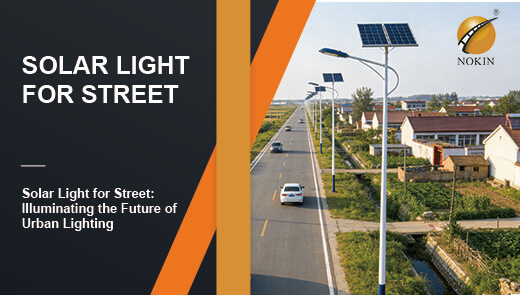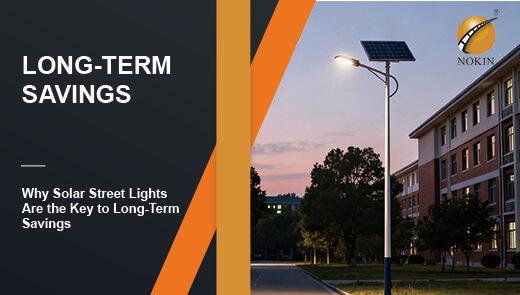Reduce Carbon Footprint with Solar Street Lighting System
The term "carbon footprint" may be unfamiliar to you, but it is closely related to human activities - from industrial production lines to everyday life, carbon emissions from every aspect of life have a profound impact on the ecological balance of the planet. As an important part of urban infrastructure, the choice of energy for lighting systems is becoming a key breakthrough in the climate dilemma. Using renewable solar energy as the core energy source, solar street lights are redefining the environmental benchmark for urban lighting and providing a practical technological path to build a zero-carbon future.
What is Carbon Footprint?
Carbon footprint is a core indicator of the environmental impact of human activities, specifically the total amount of greenhouse gases released into the atmosphere by human behavior, of which carbon dioxide accounts for the largest proportion. These emissions come from a wide range of sources in all areas of life: transportation (e.g., use of cars, planes, trains), energy consumption (electricity supply and heating systems), dietary choices (especially meat consumption), and waste disposal (especially non-biodegradable items). A clear understanding of what constitutes a carbon footprint is an important prerequisite for moving towards sustainable development.
In today's world of accelerated urbanization, the carbon footprint of every piece of infrastructure cannot be ignored, even the seemingly ordinary street lighting system. As the mainstay of urban nighttime lighting, the type of energy used in streetlights is directly related to the city's overall carbon footprint, which makes solar streetlights increasingly valuable as a low-carbon lighting solution.
Carbon Footprint Comparison between Traditional Street Lights and Solar Street Lights
The High Carbon Emission Dilemma of Traditional Street Lights
For a long time, traditional street lights have been the mainstay of urban lighting, but there are obvious deficiencies in its energy structure. These streetlights rely heavily on non-renewable energy sources, and are commonly powered by metal halide or high-pressure sodium lamps. Taking the data of the United States in 2021 as an example, the power generation capacity of utility power plants in that year was about 4.11 trillion kilowatt-hours (kWh), accompanied by about 1.65 billion tons of carbon dioxide (CO2) emissions, which is equivalent to 0.855 pounds of carbon dioxide per kilowatt-hour of electricity. Such a staggering amount of carbon emissions makes traditional streetlights one of the major contributors to a city's carbon footprint.
The Low Carbon Benefits of Solar Street lights
Solar street lights show a very different pattern of energy utilization. It uses photovoltaic panels to convert solar energy into electricity to power the lamps. It is notable for having zero carbon emissions during the operational phase, and many are designed to work completely off the grid. Solar street lights also emphasize the use of sustainable materials and methods in manufacturing and disposal throughout their lifecycle, in contrast to traditional streetlights. A comparison of their full lifecycle carbon footprints is shown below:
|
Comparison Project |
Conventional Streetlight |
Solar Streetlight |
|
Energy Source |
Non-renewable energy |
Solar (renewable energy) |
|
Operational Stage Carbon Emissions |
High (~0.855 lbs CO₂ per kWh) |
Zero |
|
Manufacturing Stage Materials |
Conventional materials |
Sustainable materials |
|
Maintenance Phase Resource Consumption |
High |
Low |
9 Benefits of Solar Lighting to Reduce Your Carbon Footprint
Significantly Reduces Greenhouse Gas Emissions
Solar streetlights achieve zero CO₂ emissions during the operational phase, and unlike fossil-fuel-dependent conventional lighting, they cut off dependence on carbon-intensive energy sources at the source by converting solar energy directly through photovoltaic panels. This feature makes solar streetlights a direct solution to climate change. It is estimated that a single solar streetlight can reduce about 1.2 tons of CO₂ emissions per year, which is equivalent to the carbon sink effect of planting 67 trees.
Energy Independence
solar street light adopts off-grid power supply mode, and can operate independently without connecting to the traditional power grid. This energy independence not only reduces the dependence on fossil fuels such as coal and natural gas, but also eases the pressure on the power grid. In remote areas or areas with weak grid coverage, this feature highlights its sustainability and supports the construction of a distributed clean energy network.
Cost Saving in the Whole Life Cycle
Although the initial investment is higher than that of traditional street lamps, the long-term economic advantages of solar street lamps are remarkable:
Completely eliminate the monthly electricity expenditure, and a single lamp saves about 800-1200 yuan of electricity per year on average;
Combination of LED light source and intelligent control system reduces the maintenance cost by more than 70% compared with that of traditional lamps;
Within the service life of 10-15 years, the comprehensive cost can be reduced by 40-60%, realizing the economic and environmental protection benefits. 60%, realizing the double return of economy and environmental protection.
Low Maintenance Requirements and Lasting Environmental Benefits
solar street light adopts modular and durable design, which eliminates the need for frequent replacement of parts and components, and the annual maintenance only involves cleaning the PV panels and checking the status of the batteries. This low-maintenance feature not only reduces the consumption of labor resources, but also avoids the transportation emissions and material waste generated during the maintenance of traditional street lights, further consolidating its low-carbon attributes.
Lightweight Installation Design
Compared to traditional streetlights that require the tedious construction of digging cable trenches and laying power grids, solar street lights are installed without wiring, and the damage to soil and vegetation is almost negligible. In ecologically sensitive areas such as nature reserves and wetlands, this “zero interference” installation mode can not only meet the lighting needs, but also protect the biological habitat, realizing the balance between lighting function and ecological protection.
LED Technology Driven
The standard LED light source of the solar street light saves more than 75% energy compared with traditional sodium lamps, and with the intelligent light control system, the power can be automatically adjusted according to the environmental brightness. This high-efficiency combination increases the energy conversion rate of the solar system to 22%-25%, which reduces energy consumption and light pollution at the same time - the LED directional lighting design can control light spillage within 15%, much lower than the 40% of traditional lamps and lanterns.
Relieve the Peak Load of the Power Grid
Solar street light can directly reduce the power supply pressure of the power grid during the evening peak hours through the **“energy storage during the day + power supply at night ”** mode. Data show that urban lighting accounts for about 15%-20% of the peak load of the power grid, and large-scale application of solar street lights can make coal-fired power plants reduce power generation by 10% during peak hours, which is equivalent to an average annual reduction of 380 tons of CO₂ emissions per square kilometer area.
Light Pollution Control
Solar streetlights are equipped with optical lenses and cut-off lampshades that precisely project light onto the road surface, avoiding sky light pollution caused by upward illumination. This design not only protects nighttime ecosystems (e.g., bird migration, insect breeding), but also enhances the visual comfort of residents at night, in line with the environmental standards of the Dark Sky Initiative.
Raising Community Environmental Awareness
As a visible and sustainable infrastructure, solar streetlights serve as physical educational samples of community environmental protection. As a visible sustainable infrastructure, solar streetlights become a physical educational sample for community environmental protection. The popularization of its operation principles (such as real-time power generation and carbon emission reduction data display) can enhance public awareness of renewable energy, which in turn leads to low-carbon consumption behaviors such as household solar energy equipment and electric vehicles, forming the environmental protection conduction effect of “demonstration - cognition - practice”.
Environmental Benefits of Solar Street Lights
Core Value of Renewable Energy
Solar energy, as the energy source of solar street lights, is an abundant and free renewable energy. By utilizing sunlight, solar streetlights reduce the need for non-renewable energy sources such as coal, natural gas and oil to generate electricity, radically reducing carbon emissions associated with fossil fuel combustion, making them a model of sustainable energy use.
Quantitative Contribution of Direct Emission Reduction
By generating electricity on-site, the solar streetlight replaces the consumption of grid electricity, thus directly reducing emissions. The clean electricity it generates avoids the carbon dioxide emissions produced by conventional power plants, making a concrete contribution to the overall emissions reduction target, and is a practical and feasible measure to combat climate change.
Full Life Cycle Energy Efficiency Optimization
Solar street light combines efficient lighting, energy storage and intelligent control system. the combination of LED technology and intelligent control minimizes energy waste, optimizes resource utilization, and achieves a lower carbon footprint throughout the street light's lifecycle, reflecting the concept of full-life-cycle environmental protection.
Future Prospect of Solar Street Light
With the continuous promotion and popularization of solar energy technology, solar street lights have provided green lighting solutions for many regions around the world and achieved significant emission reduction. Whether in developed city streets or remote mountain village paths, the use of solar street lights can reduce a large amount of carbon emissions every year, making a great contribution to the reduction of carbon footprint in the field of lighting.
As a manufacturer and supplier of solar streetlights, Nokin is willing and able to provide solar streetlight lighting systems to customers around the world, and jointly help the global energy saving and emission reduction goals to be realized as soon as possible! If you are looking for environmentally friendly and efficient lighting for your project, please contact Nokin today!




